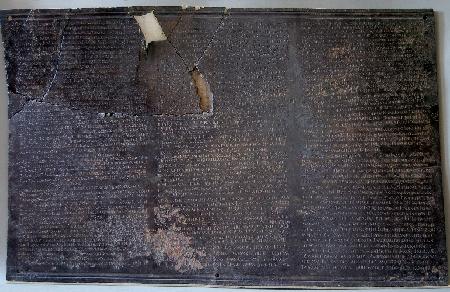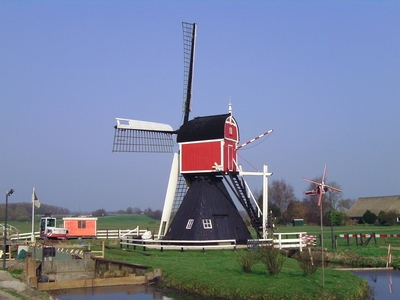Summer time has been for me amidst of other things a book reading time. One of the new books I read became within a few months a bestseller in my country. Author Kester Freriks published already several books about nature and maps. His new book Grensverkenningen. Langs oude grenzen in Nederland [Border reconnaissance. Along old frontiets in the Netherlands] (Amsterdam 2022) came into existence thanks to Leiden University Library. Martijn Storms, curator of maps and atlases at this library, is his co-author. Earlier books by Freriks showed gems from the maps held at the Allard Pierson, the combined museum and special collections of Amsterdam University Library. The rich map collection created by Johannes Tiberius Bodel Nijenhuis (1797-1872) is the central element of this book which helps you to perceive more borders than you would have imagined yourself. This post offers you some glimpses of the riches of this book and some reflections about them.
150 years Bodel Nijenhuis collection
Leiden University Library celebrates this year the arrival of a great gift 150 years ago. In his will Bodel Nijenhuis donated his vast collection of maps and atlases, not just for the Netherlands but for many other countries, too, to Leiden University Library. It became the core collection of the current Maps and Atlases department. For his new book Kester Freriks not only worked together with curator Martijn Storms. Storms provided for each of the twenty maps shown a description with background information. In each chapter Freriks walked in the particular landscape of the map with different people helping him to either find traces of old borders or to perceive better the meaning of still visible border markings in a landscape.
Kester Freriks is a keen observer. He came first to my attention when I found his book Vogels kijken [Watching birds] (Amsterdam 2009) where he gave succinct descriptions of 300 birds he saw himself in the Netherlands, each of them shown with beautiful old drawings from the library of Artis, the Amsterdam zoo. His concise bird observations originally appeared in the NRC newspaper. In 2010 appeared Verborgen wildernis [Hidden wilderness], written with Jan W.H. Werner of the Allard Pierson, with stories about walks at surprisingly wild locations in my densely populated country, combined with short notes about old maps showing these areas in earlier centuries . Later on Freriks offered with Joyce Roodnat and Erik van Zuylen a hommage to the nine volumes of the Atlas der Neederlanden in a book showing both old and modern maps accompanying Freriks’ observations during various short walking tours in my country [Wandelingen der Nederlanden. Hedendaagse voetreizen door historisch Nederland (Amsterdam 2013)]. Writing about him makes me smile about my own series of posts with adventures of a walking historian…
Maps in many genres
This new book pleases me much. Freriks’ choice to walk together with different people decidedly enlivens the book. The cover of Grensverkenningen shows a map dealing with a national border, in fact a very particular one. After the French occupation of the Netherlands during Napoleon’s reign new borders were drawn at the Congress of Vienna (1815). The map shows the projected border of the new province Limburg with Prussia in the area near the town of Roermond, the former main town of Opper-Gelre, one of the four regions constituing the duchy of Gelre (Guelders). Here Freriks made a walk with Peer Roselie, city archivist of Sittard and Geleen. They ended at Gangelt where German territory now cuts deep into Limburg, not as planned on this map. Gangelt is the place where the famous Flemish cartographer Gerard Mercator (1512-1594) was a pupil at the Latin school. I suppose this map with both a military and a legal purpose favored my decision to write about this book here, but anyway the combination of insights brought together is simply most captivating (pp. 202-213).

The second chapter (pp. 30-41) opens with a beautiful map created around 1700 showing a part of Guelders – now Gelderland – near the Rhine river and castle Doorwerth, to the west of Arnhem. Architectural photographer Luuk Kramer accompanied Freriks on his walk. This map uses at least partially a bird’s eye perspective. When you look this way the tiny coloured details appear indeed very bright, not just the castle Doorwerth and its gardens, but also for example the nearby gallows. Freriks’ book does show such details very well. The only thing to complain about are the modest dimensions of his book, but for the same reason its price is modest, too.
Until now I mentioned two map genres which are fairly common, a frontier map and a domanial map. In the chapter introducing Bodel Nijenhuis and in another chapter Freriks uses several maps of Leiden showing the impact of the 1807 gunpowder disaster killing many people and destroying an area along the Rapenburg canal in the old city centre (pp. 68-79). Leiden figures also in a chapter around a late seventeenth-century set of city maps showing the division of neighbourhoods (pp. 106-117).
The forces of nature come in particular into view in the chapters about two islands. First comes a chapter focusing on the former island Urk, once a vital point for ships sailing the former Zuiderzee from Amsterdam to the North Sea, now located in Flevoland, a province reclaimed from the sea in the last century (pp. 118-127). From 1660 to 1792 the city of Amsterdam even owned Urk. Freriks looks at a map from 1649 showing a screen of wooden poles protecting the inhabitants against the sea, and he walks with local historian Johannes Kramer. The battle against the sea was eventually lost at another island. In the early eighteenth century the village of West-Vlieland could not be saved from the waves of the Wadden Sea (pp. 214-227). Beachcomber Dirk Bruins helped Freriks to find traces of this story centered around a map from 1712.
It is invidious to select here more chapters. When walking the nearly straight line of the frontier between the provinces of Groningen and Drenthe Freriks visited also the Drents Archief in Assen (pp. 138-151). The Semslinie is reputedly the first linear frontier drawn on a map. It was created in order to settle disputes about fens claimed both by the powerful province Groningen and the much poorer landschap Drenthe. This frontier runs very close to Ter Apel, once the location of a Cistercian monastery, but nowadays known for a very different institution, the national arrival centre of the Dutch inmigration service. Freriks shows his mastery as a writer at its strongest by mentioning very calm this utter difference, and leaving space for your own thoughts about this year’s appalling humanitarian situation. Just for the record, I cannot help remembering the medieval Hollandse Rading, a straight line between the diocese Utrecht and the county of Holland running between the villages Maartensdijk and Breukelen.
Whether discussing a map showing the changing role of waters near the Vecht river in Utrecht, walking the grounds of a former estate near Leiden, imagining the church bells of Leeuwarden toiling and thus delineating jurisdictions outside the town walls or looking into the vast empty lands reclaimed from the sea near Groningen Freriks shows himself a wonderful observer. Moreover, he bcomes a true partner of his companions, be they philosopher, photographer or archivist. At home you can look online at several of the maps discussed in Grensverkenningen within the digital collections of Leiden University Library. This subdomain is not mentioned in the book, but another website might be interesting, too, for your own imaginary walks, the Actuele Hoogtebestand Nederland (AHN), an online map showing in amazing detail current heights in my country which partially is situated below sea level. Freriks’ book is a splendid invitation to explore historic maps about many Dutch regions, to walk yourself in towns and the countryside, and to open dialogues with people helping each other to gain shared fresh insights about the past and present.
Kester Freriks and Martijn Storms, Grensverkenningen. Langs oude grenzen in Nederland (Amsterdam: Athenaeum-Polak & Van Gennep, 2022; 247 pp.; ISBN: 9789025314637)















